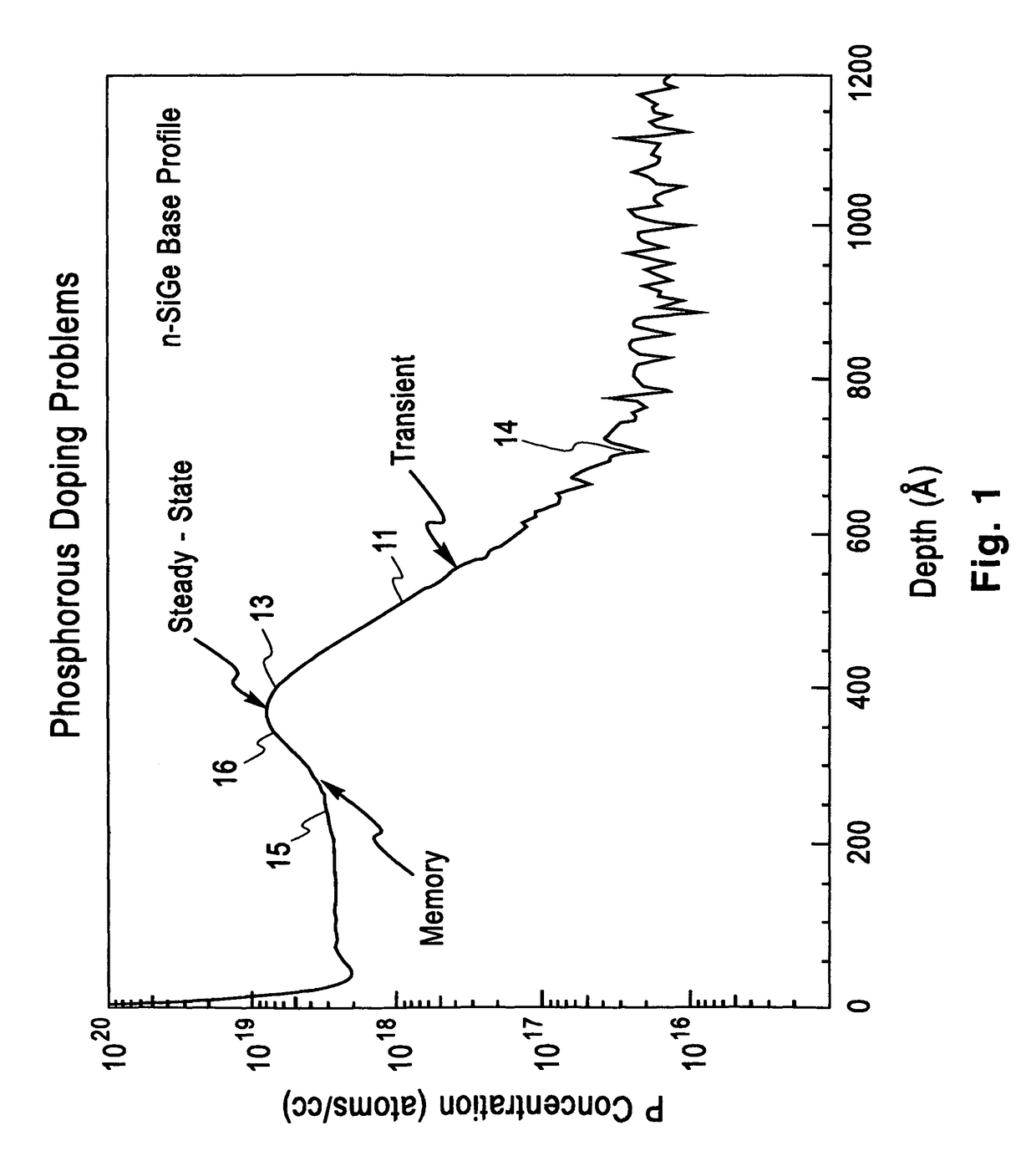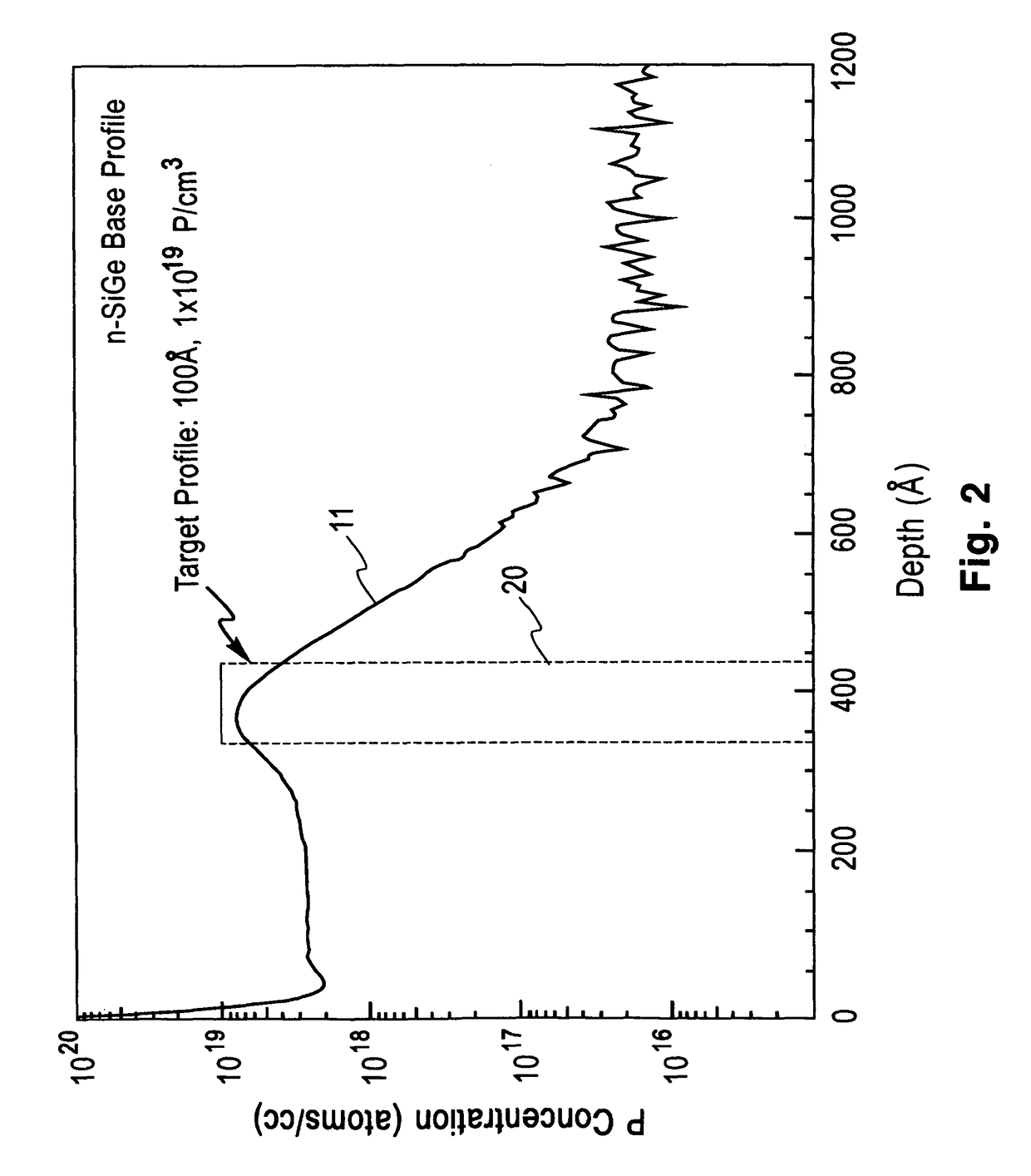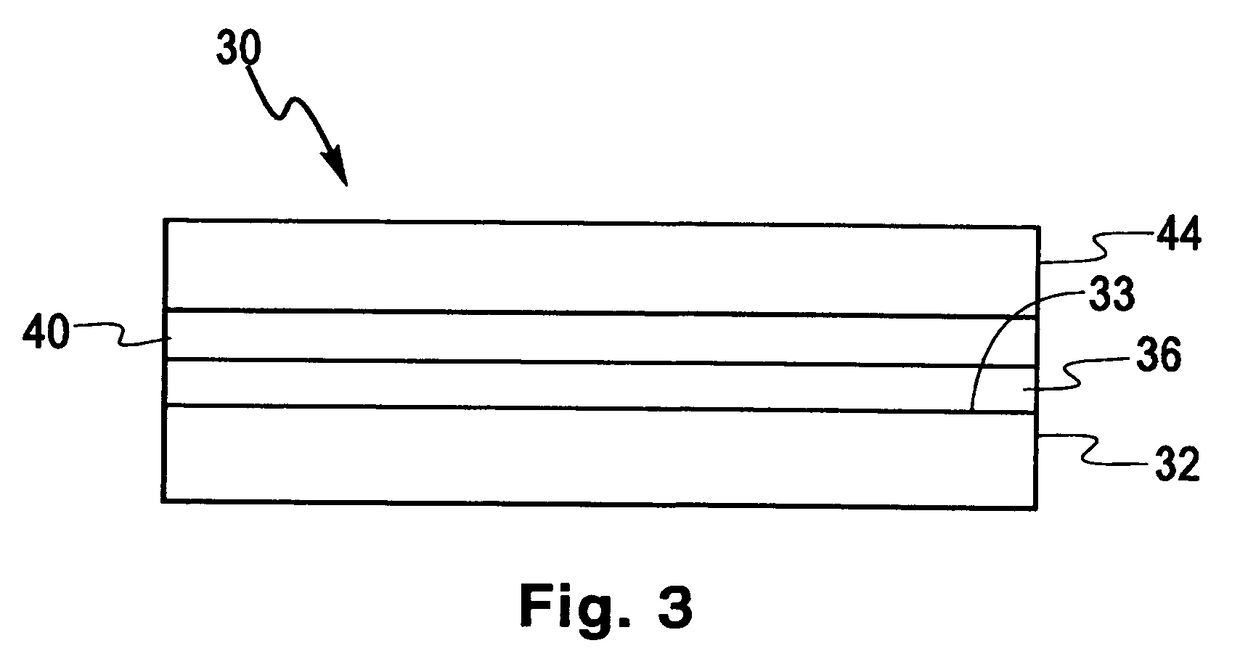Abrupt “delta-like” doping in Si and SiGe films by UHV-CVD
a technology of uhv-cvd and dielectric film, which is applied in the direction of chemistry apparatus and processes, crystal growth process, polycrystalline material growth, etc., can solve the problems of high doping level, undesirable in-situ doping,
- Summary
- Abstract
- Description
- Claims
- Application Information
AI Technical Summary
Benefits of technology
Problems solved by technology
Method used
Image
Examples
Embodiment Construction
Referring to the drawing and in particular to FIG. 3, a cross section view of structure 30 having an abrupt phosphorus or arsenic profile or abrupt layer doping (ALD) is shown. A substrate 32 having an upper surface 33 may be for example single crystal Si or SiGe. A first layer 36 of 100% or substantially Ge is epitaxially formed on upper surface 33 having a thickness less than the critical thickness and may be, for example, 0.5 to 2 nm and is doped with P or As.
The effect of the thickness of first layer 36 is not to increase the doping concentration of P or As, but the effect is to increase the sheet dose, which is the doping concentration multiplied by the doped layer thickness. The doping concentration is controlled by the flow rate of the dopant source gas and by the growth rate of first layer 36, which in turn, is controlled by the flow rate of the Ge source gas which may be, for example, GeH4.
The critical thickness of a layer is the thickness after which the layer relaxes to r...
PUM
| Property | Measurement | Unit |
|---|---|---|
| concentration | aaaaa | aaaaa |
| width | aaaaa | aaaaa |
| width | aaaaa | aaaaa |
Abstract
Description
Claims
Application Information
 Login to View More
Login to View More - R&D
- Intellectual Property
- Life Sciences
- Materials
- Tech Scout
- Unparalleled Data Quality
- Higher Quality Content
- 60% Fewer Hallucinations
Browse by: Latest US Patents, China's latest patents, Technical Efficacy Thesaurus, Application Domain, Technology Topic, Popular Technical Reports.
© 2025 PatSnap. All rights reserved.Legal|Privacy policy|Modern Slavery Act Transparency Statement|Sitemap|About US| Contact US: help@patsnap.com



